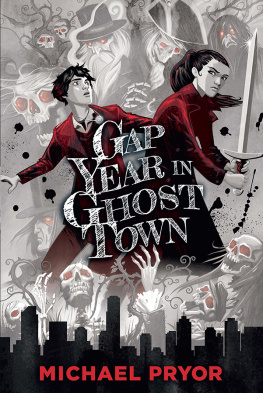
D avid Baldwin, Mark Barden, Adrian Ho, Patrick Howie, Chris Grams, Keith Grossman, Ted Manger, Tom Richards, Domenico Vitale, and Jim Whitehurst. For your insights and kind endorsements after reading an advance draft of the book.
Stephen Berkov, Rod Brown, Walt Barron, Erin Bredemann, Jonathan Cude, Dave Cook, Matt Fischvogt, Doug Holroyd, Jason Musante, Lee Newman, Christin Prince, Jim Russell, and Chris Walsh. For leading the charge on the Heist journey.
Hilary Boys, Mike Branson, Fiona Gilmore, and Michael Peters. For giving me my start in the design industry and teaching me an enormous amount about the business.
Patty Briguglio and Janice Snook. For all your help in generating publicity for the book.
Dave Bryant. For introducing me to NLP as well as numerous projective research and planning techniques.
Denis Budniewski. For being my automotive and financial expert and advisor, as well as my partner on the Audi and NASDAQ experiences.
Daanesh Chanduwadia and Cameron McNaughton. For being my automotive experts, advising on Hyundai and various other automotive examples.
Andrew Delbridge. For being my strategy partner for a decade and so often helping to make my ideas bigger and better.
Dr. Bob Deutsch. For generously allowing me to quote from your inspiring work, and for your insight after reading an advance draft of the book.
Nora Fritz. For your great assistance in pulling the notes section together.
Susan Gianinno, Rob Feakins, Brian Skahan, Robin Koval, Linda Kaplan, Tricia Kenney, our strategy community, and everyone at Publicis Kaplan Thaler. For your great assistance with the marketing and promotion of the book.
Kevin Grealey, Janet Mehl, and Lisa Shearin. For your great assistance with proofing and copy proofing, refining the notes section, and dealing with my englishisms.
Bill Goodenough, Phillip Lauder, Richard Williams, and Keith Young. For teaching me everything I needed to know about the pan-European design business.
(The late) Dee Holden. For sharing a love of writing with me and for everything else, Mum. (The late) Pat Holden for the many life lessons and investing in my education. Also my sisters, Kay Knight, Gill Holden-Rea, and Penny Holden, along with my ex-wife, Manda Holden, for all the ideas you imparted both knowingly and unknowingly.
John Jacobs (and his team at NASDAQ). For allowing me to reference the NASDAQ experiences, and for your insights and kind endorsement after reading an advance draft of the book. Also in loving memory of the irreplaceable Kate Stonehouse, a deeply missed friend and colleague.
Jeff Jones. For kindly endorsing the book as well as my use of the McKinney experiences.
Everyone at McKinney (past and present). For all those conscious and unconscious thoughts that you put in my head that found their way into this book.
Mac Merrell and Gary Knutson. For giving me my start in advertising in the United States. Also in memory of Bruce Hall, a sadly missed friend and colleague.
Steven L. Mitchell and his team at Prometheus Books. For stewarding me through the final phases of editing toward the book launch.
Meryl Moss. For being my trusted publicist.
Johan de Nysschen. For allowing me to reference the Audi experiences, and for your insights and generous endorsement after reading an advance draft of the book.
Monty and Virginia Parker. For being the world's most enthusiastic readers and listeners.
Natalie Perkins. For letting me access Clean Design's many talents and simply being you, my love.
Dr. Chester Phillips. For being my medical advisor and racquetball torturer.
Linda Regan. For championing the book initially within Prometheus Books.
Tanya Russell. For working around me and tolerating my spontaneous outbursts of singing.
Scott Scaggs. For helping to source the images for the book and for the initial Second That Emotion ribbon design.
Cynthia Zigmund. For being my trusted literary agent and making this book possible.

Half the promises people say were never kept, were never made.
Edgar Watson Howe,
E. W. Howe's Monthly, 19111937
S ocial contracts represent the essential ingredient in creating movements, whether those movements are historical, political, populist, or commercial.
There was a moment in the 2008 election campaign when a rather shambolic woman approached the platform at one of Senator John McCain's rallies to express her concerns about Senator Barack Obama as a future president. After some inaudible words of support for the candidate, she stumbled toward the real emotional basis of her opposition to Senator Obama: I have read about him and he's an Arab!
In that moment, the truth behind the cause she felt she was part ofand the basis of her illogical beliefswas revealed. The fact that it shocked Senator McCain was evident. In an unguarded moment, he spontaneously countered her words: No ma'am, no ma'am. He's a decent family man and a citizen that I just happen to have disagreements with.
The disappointment among the assembled crowd was audible and palpable. Senator McCain's gracious and reasonable statement literally sucked the life out of the room. In that moment, the senator had broken the terms of a social contract that a group of his supporters had entered into with him, but which he wasn't fully aware of. In a heightened emotional state, these supporters had taken a set of facts and morphed them into a reality that was meaningful to them. The terms of their social contract with the Republican nominee stated: I will support you if you recognize that Senator Obama is a Muslim who seeks to destroy America from the inside out.
At the core of the contract was an illogical leap: Senator Obama's ethnicity is unclear from his appearance and he spent time in a Muslim country in his early years. Arabs attacked us on September 11, 2001. Therefore Senator Obama is an Arab who seeks to destroy America.
Senator Obama's ethnicity isn't obvious from his appearance. He had spent part of his early life in the primarily Muslim country of Indonesia, although this was mostly unknown when he started his campaign. Arabs did attack the United States on September 11. The (illogical) conclusion was that he was an Arab, and because he was an Arab he was an enemy of America bent on destroying the United States and her citizens, from the inside out.
In February 2011, the Pew Research Center found that 31 percent of Republicans polled believed that Barack Obama was a Muslim while 39 percent responded that they didn't know. Only 27 percent believed Obama when he saidand demonstrated on numerous occasionsthat he was a Christian. The fact that the campaign had highlighted his attendance at the incendiary Reverend Wright's church in Chicago was known consciously, but it only added fuel to the fire. Almost a third of Republicans demanded that their candidate recognize the threat to national security that Senator Obama posedmore than enough to deflate the Far Right, limit their turnout, and shape the election.
Only in that moment did Senator McCain truly comprehend the basis of support that he had from that group. His surprise and concern was evident in his reaction, and from then on his campaign, to his creditor at least the elements of his campaign that he fully controllednever sought to perpetuate that type of myth and misinformation.
Next page















